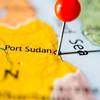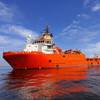Wärtsilä Corporation will deliver four Wärtsilä 46 EnviroEngines totaling 67.2 MW power output for Cunard Line's new luxury transatlantic liner, Queen Mary 2. These engines will incorporate the latest common-rail fuel injection technology for operation without any visible smoke.
Due for delivery in late 2003 by the French shipbuilder Chantiers de l'Atlantique in Saint Nazaire, the "Queen Mary 2" will be the world's largest passenger vessel. Measuring 345 m long by 40 m beam and drawing 10 m, the 150,000 grt liner will have a maximum speed of about 30 knots. Electrical power for propulsion and all shipboard services will be generated by a 115.5 MW combined diesel- and gas turbine-electric power plant. Propulsion will be by four electrically driven podded drives, two fixed and two azimuthing.
The four Wärtsilä 16V46 EnviroEngines will be manufactured at Wärtsilä's Turku factory in Finland. They are due to be shipped in June 2002. The engines will each have a maximum continuous output of 16,800 kW (22,840 bhp) at 514 rev/min. For redundancy, the diesel generating sets will be housed in two separate engine rooms on board the "Queen Mary 2".
The Wärtsilä EnviroEngine arose from a joint project between Carnival Corporation, the parent company for Cunard Line, and Wärtsilä Corporation to develop a new "earth-friendly" power system. The Wärtsilä 46 EnviroEngines use an electronically-controlled common rail fuel injection system which enables injection pressures to be kept sufficiently high at all engine loads and speeds - even at the lowest levels - to achieve clean combustion with no visible smoke emissions. The EnviroEngines will be particularly beneficial for use in port, as they are designed to produce no visible emissions even when lightly loaded for producing energy for lighting, air conditioning and other hotel systems.
Sponsored Content
Experience Custom Yacht Signs and Designs Tailored to Perfection!

April 2025
 Read the Magazine
Read the Magazine

 Read the Magazine
Read the Magazine
This issue sponsored by:

Saltchuk Doubles Down on Workforce Development Investments
Subscribe for
Maritime Reporter E-News
Maritime Reporter E-News is the maritime industry's largest circulation and most authoritative ENews Service, delivered to your Email five times per week







